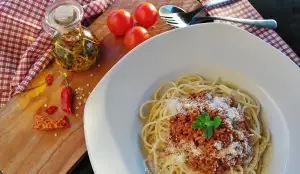Indulge in the Perfect Buttercream: A Step-by-Step Guide to Making Irresistible Frosting

- Ingredients for buttercream frosting
- Step-by-step instructions on making buttercream frosting
- Softening the butter
- Sifting the powdered sugar
- Combining butter and powdered sugar
- Adding flavorings and liquids
- Mixing the ingredients
- Tips for achieving the perfect buttercream consistency
- Variations and flavor ideas for buttercream frosting
Buttercream frosting is a delicious and versatile icing that can elevate any cake or cupcake to new heights of flavor. Made with simple ingredients like butter, powdered sugar, and flavorings, buttercream frosting is easy to make and offers endless possibilities for customization. Whether you're a seasoned baker or just starting out, mastering the art of making perfect buttercream frosting will take your desserts to the next level. In this step-by-step guide, we will walk you through the process of creating irresistible buttercream frosting that will have everyone coming back for seconds. So grab your apron and get ready to indulge in the sweet satisfaction of homemade buttercream!
Ingredients for buttercream frosting
To create the perfect buttercream frosting, you will need a few key ingredients. These include:
1. Butter: Start with unsalted butter at room temperature. This ensures that it can be easily incorporated into the frosting and creates a smooth texture.
2. Powdered sugar: Also known as confectioners' sugar, this fine sugar is essential for achieving the desired sweetness and consistency of the frosting.
3. Flavorings: Vanilla extract is a classic choice for buttercream frosting, but you can also experiment with other extracts like almond or lemon to add unique flavors.
4. Liquids: Milk or heavy cream are commonly used to thin out the frosting and make it easier to spread. You can adjust the amount based on your desired consistency.
These basic ingredients form the foundation of any buttercream frosting recipe, but feel free to explore additional flavorings and variations to suit your taste preferences.
Step-by-step instructions on making buttercream frosting
a. Softening the butter: Start by allowing the butter to come to room temperature. This will make it easier to cream and incorporate with other ingredients.
b. Sifting the powdered sugar: Sift the powdered sugar to remove any lumps and ensure a smooth texture in your frosting.
c. Combining butter and powdered sugar: In a mixing bowl, cream together the softened butter and sifted powdered sugar until light and fluffy. This can be done using an electric mixer or by hand.
d. Adding flavorings and liquids: Add any desired flavorings, such as vanilla extract or cocoa powder, along with any liquid ingredients like milk or heavy cream. These additions will enhance the taste and texture of your buttercream.
e. Mixing the ingredients: Mix all the ingredients together until well combined and smooth. Be careful not to overmix, as this can lead to a greasy or dense frosting.
By following these step-by-step instructions, you'll be able to create a delicious and creamy buttercream frosting that will elevate your baked goods to new heights of indulgence.
Softening the butter
Softening the butter is a crucial step in making perfect buttercream frosting. Start by taking the required amount of unsalted butter out of the refrigerator and allowing it to come to room temperature. This usually takes around 1-2 hours, depending on the temperature of your kitchen. Softening the butter ensures that it incorporates smoothly with other ingredients, resulting in a creamy and smooth texture for your frosting. Avoid using melted or overly soft butter, as it can affect the consistency and stability of the frosting.
Sifting the powdered sugar
Sifting the powdered sugar is a crucial step in achieving a smooth and lump-free buttercream frosting. Powdered sugar often contains small clumps that can ruin the texture of the frosting if not properly sifted. To sift the powdered sugar, you will need a fine-mesh sieve or sifter. Place the sieve over a bowl and measure out the required amount of powdered sugar. Gently tap or shake the sieve to allow the sugar to pass through while leaving behind any lumps or impurities. This process aerates the sugar, making it lighter and easier to incorporate into the butter. Sifting also helps prevent any unwanted grittiness in your final frosting, ensuring a velvety smooth consistency that will melt in your mouth with every bite.
Combining butter and powdered sugar
Combining butter and powdered sugar is a crucial step in making buttercream frosting. Start by ensuring that the butter is at room temperature for easy blending. Using an electric mixer, beat the softened butter on medium speed until it becomes creamy and smooth. This process usually takes around 2-3 minutes.
Next, gradually add the sifted powdered sugar to the butter. It's important to sift the powdered sugar beforehand to remove any lumps and ensure a smooth texture. Adding the sugar slowly helps prevent clumping and allows for better incorporation into the butter.
Continue beating the mixture on low speed until the powdered sugar is fully combined with the butter. Increase the speed to medium and beat for an additional 2-3 minutes until light and fluffy. The mixture should have a pale color and a creamy consistency.
The combination of butter and powdered sugar forms the base of your buttercream frosting, providing sweetness, richness, and stability. This step sets the foundation for creating a delectable frosting that will enhance any cake or dessert.
Remember to scrape down the sides of the bowl periodically during mixing to ensure all ingredients are evenly incorporated. Once you have achieved a smooth and fluffy texture, you can proceed to add flavorings and liquids according to your desired recipe or personal taste preferences.
Adding flavorings and liquids
Adding flavorings and liquids is the next step in creating the perfect buttercream frosting. This is where you can get creative and customize the flavor to your liking. Popular options include vanilla extract, almond extract, or even a splash of lemon juice for a tangy twist. You can also add liquid ingredients such as milk or heavy cream to achieve the desired consistency. Remember to start with small amounts and gradually add more until you reach the desired taste and texture. Be cautious not to add too much liquid, as it can make the frosting too runny. Take your time and taste as you go to ensure a well-balanced and delicious buttercream frosting.
Mixing the ingredients
Mixing the ingredients is a crucial step in making buttercream frosting. Once the butter and powdered sugar have been combined, it's time to add flavorings and liquids. This is where you can get creative and customize your frosting to suit your taste. Common flavorings include vanilla extract, almond extract, or cocoa powder for chocolate buttercream. You can also add a pinch of salt to enhance the flavors. As for liquids, milk or heavy cream are typically used to achieve the desired consistency. Gradually add the flavorings and liquids while mixing on low speed until everything is well incorporated. Be careful not to overmix as it can lead to a runny frosting. The goal is to achieve a smooth and creamy texture that spreads easily onto cakes or cupcakes.
Tips for achieving the perfect buttercream consistency
1. Use room temperature ingredients: Make sure your butter, eggs, and any other liquids are at room temperature before starting. This will help the ingredients blend together smoothly and prevent lumps in your frosting.
2. Soften the butter properly: Softening the butter is a crucial step in achieving a smooth and creamy texture. Leave it out at room temperature for about 30 minutes or microwave it on low power in short intervals until it becomes soft but not melted.
3. Sift the powdered sugar: Sifting the powdered sugar before adding it to the butter ensures that there are no lumps in your frosting. This step is especially important if you're using homemade powdered sugar or if your store-bought one has clumps.
4. Gradually add liquid: When adding flavorings or liquids like milk or cream, do so gradually. Adding too much liquid at once can make your frosting too runny. Start with a small amount and gradually increase until you reach your desired consistency.
5. Mix on low speed: When combining the ingredients, start mixing on low speed to avoid creating a cloud of powdered sugar. Once everything is incorporated, increase the speed to medium-high and beat until light and fluffy.
6. Adjust consistency if needed: If your buttercream is too thick, add more liquid (a teaspoon at a time) until it reaches the desired consistency. If it's too thin, add more powdered sugar (also a teaspoon at a time) until it thickens up.
By following these tips, you'll be able to achieve the perfect buttercream consistency every time, resulting in smooth and velvety frosting that will elevate any cake or dessert to new heights of deliciousness!
Variations and flavor ideas for buttercream frosting
Buttercream frosting is incredibly versatile, allowing you to experiment with different flavors and create unique combinations. Here are some variations and flavor ideas to take your buttercream to the next level:
1. Chocolate Buttercream: Add cocoa powder or melted chocolate to your buttercream for a rich and decadent chocolate flavor.
2. Citrus Buttercream: Incorporate zest or juice from lemons, oranges, or limes to give your frosting a refreshing citrus twist.
3. Coffee Buttercream: Dissolve instant coffee granules in a small amount of hot water and mix it into your buttercream for a delicious coffee-infused taste.
4. Berry Buttercream: Puree fresh berries such as strawberries, raspberries, or blueberries and fold them into your buttercream for a fruity burst of flavor.
5. Mint Buttercream: Add mint extract or finely chopped fresh mint leaves to create a cool and refreshing minty frosting.
6. Nutella Buttercream: Mix Nutella into your buttercream for a delightful hazelnut-chocolate combination that is sure to please any chocolate lover.
7. Salted Caramel Buttercream: Drizzle homemade salted caramel sauce into your buttercream for a sweet and salty treat that pairs perfectly with cakes and cupcakes.
Remember, when adding additional ingredients to your buttercream, adjust the consistency by adding more powdered sugar if needed. Get creative with flavors and have fun experimenting with different combinations until you find your perfect match!
In conclusion, mastering the art of making buttercream frosting is a surefire way to elevate your desserts to new heights. With just a few simple steps and the right ingredients, you can create a velvety smooth and irresistibly delicious topping that will leave everyone wanting more. Remember to soften the butter properly, sift the powdered sugar for a silky texture, and add flavorings and liquids to enhance the taste. Mixing it all together with care will ensure a perfect consistency every time. Don't be afraid to experiment with different flavors and variations to truly make your buttercream frosting unique. So go ahead, indulge in the perfect buttercream and let your desserts shine with love and passion for food!
Published: 08. 03. 2024
Category: Recipes



